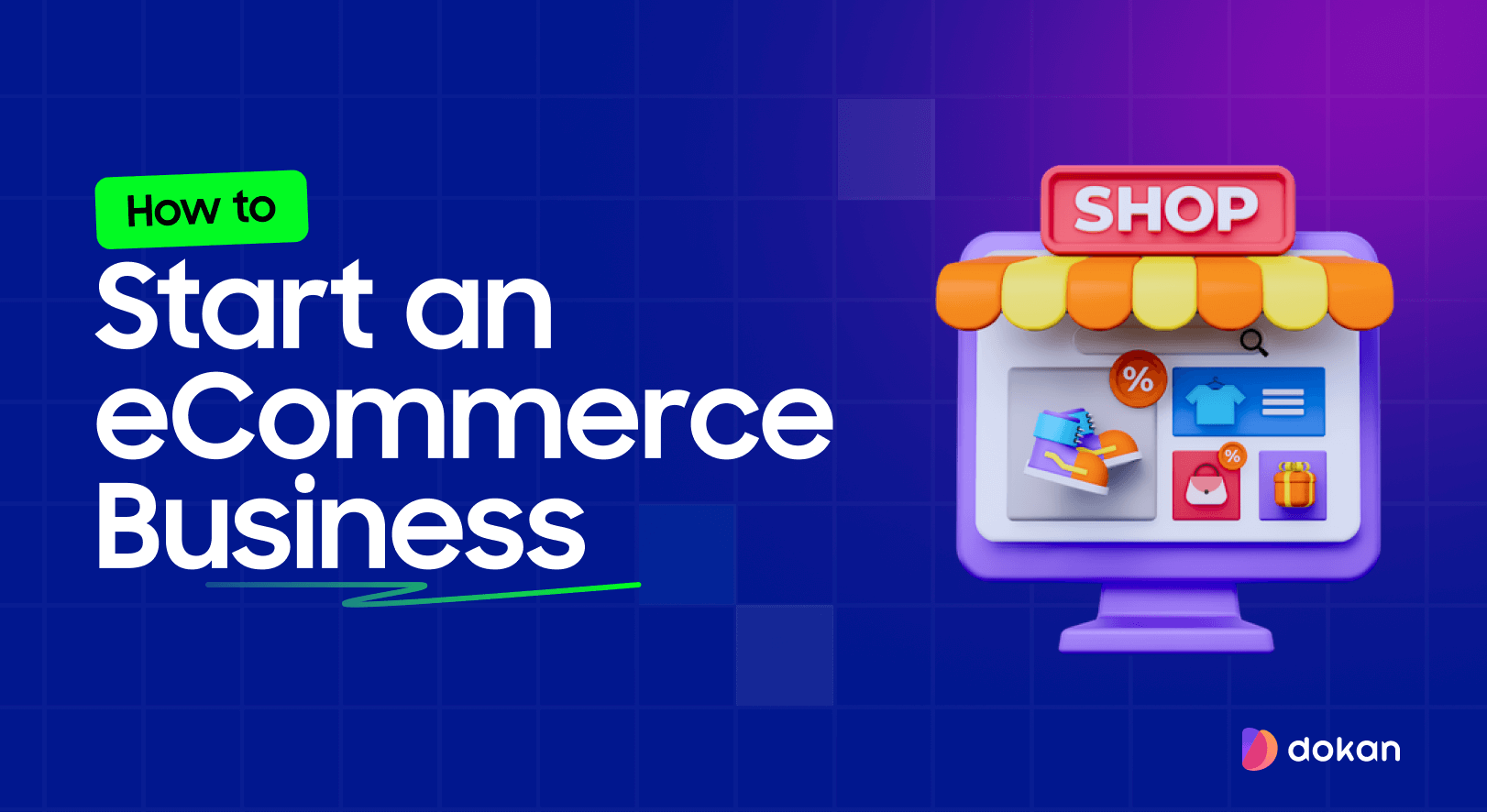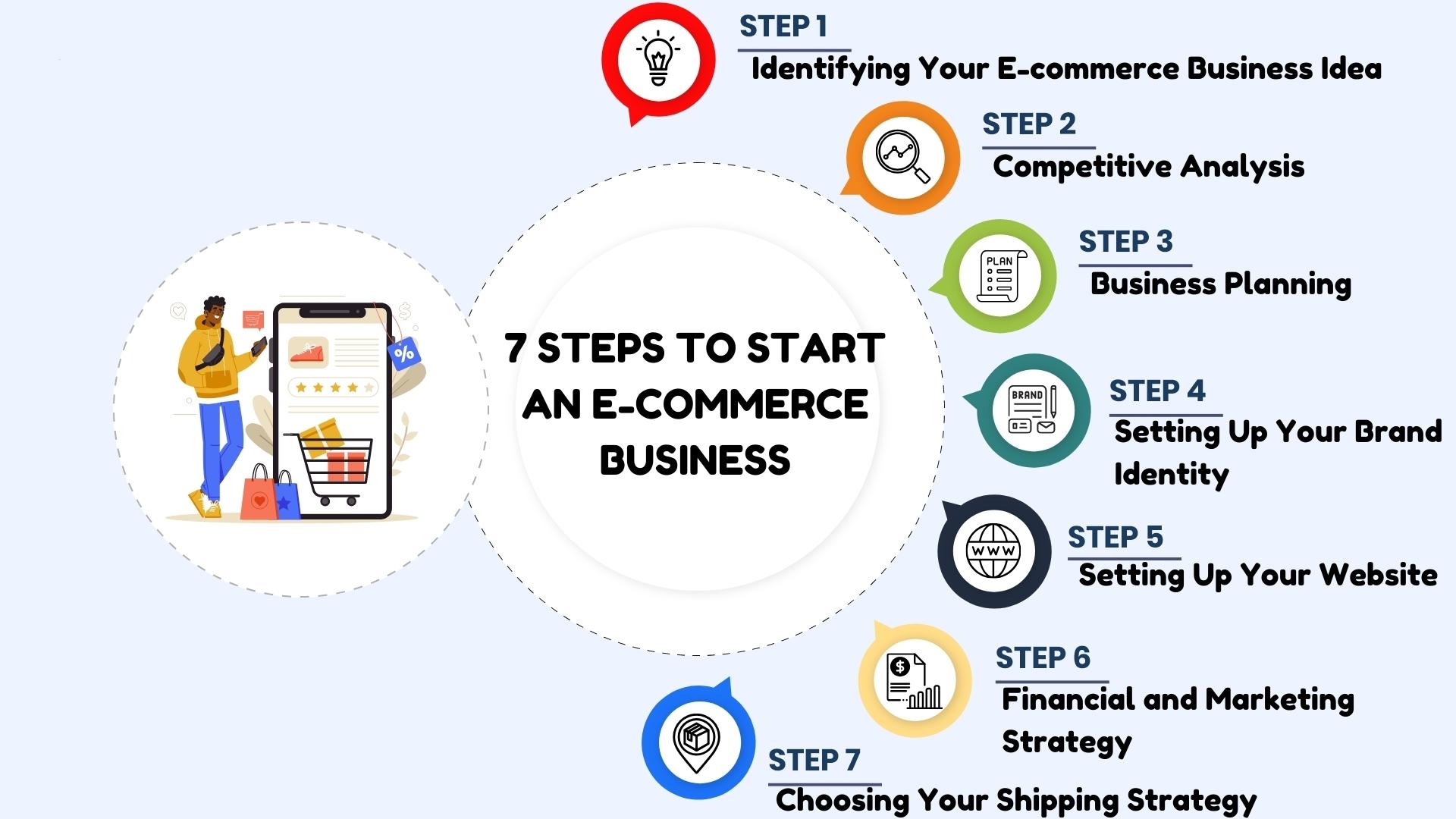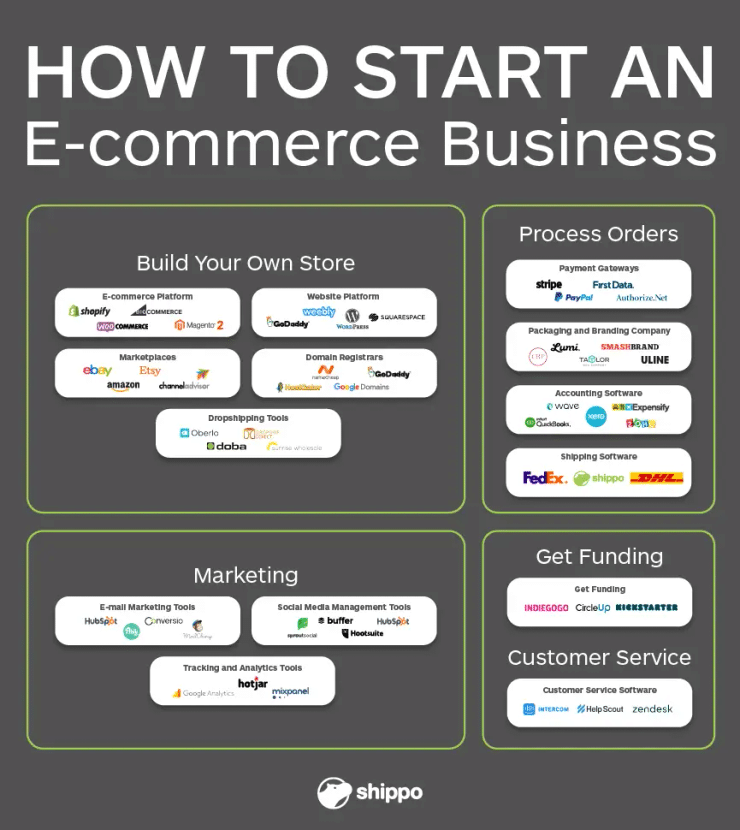Starting an ecommerce business can be a rewarding venture. It offers flexibility and a wide market reach.
In today’s digital age, more people are shopping online. This makes ecommerce a lucrative option for entrepreneurs. But where do you begin? Understanding the basics is crucial for success. You need a solid plan, the right tools, and a clear strategy.
From choosing a niche to setting up your website, each step is vital. This guide will help you navigate the process. We’ll cover key points to get you started. Ready to dive in? Let’s explore how you can launch your own ecommerce business. This journey can transform your entrepreneurial dreams into reality.
Introduction To Ecommerce
Starting an ecommerce business involves creating an online store, selecting products, and setting up payment methods. Focus on a user-friendly website and effective marketing strategies to attract customers.
Starting an ecommerce business can be a thrilling venture. The digital marketplace is vast, and opportunities are endless. If you’re considering diving into ecommerce, it’s essential to understand the basics first. Let’s start with an introduction to ecommerce. ###What Is Ecommerce?
Ecommerce, short for electronic commerce, refers to buying and selling goods or services using the internet. It’s a digital storefront where customers can browse, select, and purchase items from the comfort of their homes. Think of it as your online shop. You can sell anything from handmade crafts to high-end electronics. It’s all about connecting with customers online and meeting their needs efficiently. ###Benefits Of Ecommerce Business
Starting an ecommerce business comes with numerous advantages. Firstly, you can reach a global audience. Your products can be seen and purchased by people from different parts of the world. Additionally, ecommerce businesses often have lower overhead costs compared to physical stores. You don’t need to worry about rent, utilities, or in-store staff. Another benefit is the flexibility it offers. You can manage your business from anywhere, whether you’re at home or traveling. This flexibility is especially valuable if you’re juggling multiple responsibilities or looking for a side hustle. Have you ever bought something online and wondered how convenient it is? That’s the convenience your customers will appreciate. They can shop anytime, anywhere, without the hassle of visiting a physical store. So, are you ready to start your ecommerce journey? Think about the products you want to sell and how you can stand out in the crowded digital market.Market Research
Market research is crucial to the success of your ecommerce business. It helps you identify opportunities, understand your competition, and know your customers. This process provides valuable insights that guide your business decisions.
Identifying Your Niche
Start by identifying your niche. Choose a specific area that interests you. Think about your hobbies, passions, or skills. Look for gaps in the market. Find products or services that solve problems. A well-defined niche makes it easier to target customers.
Analyzing Competition
Next, analyze your competition. Search for businesses similar to yours. Look at their websites, social media, and customer reviews. Note their strengths and weaknesses. Understand their pricing, product range, and marketing strategies. This information helps you differentiate your business.
Understanding Target Audience
Understanding your target audience is vital. Know who your customers are. Research their age, gender, interests, and buying habits. Use surveys, interviews, or online tools to gather data. This helps you create products and marketing messages that appeal to them.
Business Plan Creation
Creating a business plan is crucial for launching an ecommerce business. This plan serves as your roadmap, guiding you through each stage of your business journey. It helps you define your goals, budget, and financial strategies. A well-thought-out plan can make the difference between success and failure. Let’s explore how to create an effective business plan.
Defining Your Goals
Start by defining your goals. What do you want to achieve? Set clear, specific, and measurable objectives. These could include revenue targets, customer acquisition numbers, or market share. Goals give you direction and a way to measure success.
Break down your long-term goals into smaller, short-term milestones. This approach makes big tasks seem manageable. Regularly review and adjust your goals to stay on track.
Budgeting And Financial Planning
Next, focus on budgeting and financial planning. Determine your startup costs. This might include website development, inventory, marketing, and other expenses. Create a detailed budget to understand your financial needs.
Plan for ongoing costs as well. These include shipping, transaction fees, and customer service. Knowing your expenses helps you set pricing strategies and profit margins. Forecast your revenue and expenses to predict future financial health.
Consider funding options. Will you self-fund, seek investors, or get a loan? Each option has its pros and cons. Choose what suits your business best.

Credit: dokan.co
Choosing An Ecommerce Platform
Choosing the right ecommerce platform is a crucial step in starting your online business. An ecommerce platform is the software that allows you to build and manage your online store. It includes essential features like product listings, shopping carts, and payment processing. The right platform can make or break your ecommerce venture.
Popular Platforms Overview
There are many ecommerce platforms available. Each has its own strengths. Some popular ones include Shopify, WooCommerce, and BigCommerce.
Shopify is user-friendly and ideal for beginners. It offers many templates and easy setup steps. It’s great for small to medium-sized businesses.
WooCommerce is a WordPress plugin. It is highly customizable. It suits businesses with specific needs. It is also great for those already using WordPress.
BigCommerce offers strong SEO features. It is scalable for larger businesses. It includes many built-in tools to manage your store.
Selecting The Right Platform
Selecting the right platform depends on your business needs. Consider your budget, technical skills, and growth plans. Shopify is best for ease of use. WooCommerce is great for customization. BigCommerce works well for scalability.
Think about your product range. If you have many products, choose a platform that can handle it. Also, consider the payment methods. Ensure the platform supports the payment options you want to offer.
Customer support is another critical factor. Choose a platform with good customer service. This can help you solve issues quickly. Finally, read reviews and seek recommendations from other business owners.
Setting Up Your Online Store
Creating a successful ecommerce business starts with setting up your online store. This step is where your vision begins to take shape, turning your ideas into a digital storefront. Let’s dive into the key components that will make your online store stand out.
Designing Your Store
First impressions matter. Your store’s design should be clean, intuitive, and reflect your brand’s personality. Choose a platform like Shopify, WooCommerce, or BigCommerce that offers customizable templates.
Think about your customers. Is the navigation simple? Are the colors and fonts easy on the eyes? A well-designed store can keep visitors engaged longer. Adding high-quality images and a cohesive color scheme can make a huge difference.
When I started my online store, I opted for a minimalist design. I noticed a significant increase in customer interaction. Have you considered what kind of design will attract your target audience?
Product Listings And Descriptions
Your product listings are the heart of your store. Each product should have a detailed description and high-quality images. Clear, concise descriptions help customers understand what they are buying.
Use bullet points to highlight key features. Make sure to include dimensions, materials, and any other relevant details. This transparency builds trust and reduces the chance of returns.
When listing my products, I noticed that including a short story or unique selling point made them more appealing. What unique aspects of your products can you highlight to engage potential buyers?
Setting Up Payment Gateways
Secure and diverse payment options are crucial. Customers should feel confident their information is safe. Popular payment gateways include PayPal, Stripe, and Square.
Ensure you offer multiple payment methods. This includes credit cards, debit cards, and digital wallets. The easier it is for customers to pay, the more likely they are to complete their purchase.
I remember receiving feedback from a customer who appreciated the variety of payment options available. Have you checked that your payment gateways are user-friendly and secure?
Setting up your online store is a crucial step in your ecommerce journey. Design, product listings, and payment gateways all play a vital role in creating a seamless shopping experience. What steps will you take to make your online store exceptional?

Credit: juphy.com
Marketing Strategies
Starting an ecommerce business involves creating a website, choosing products, and setting up a payment system. Effective marketing strategies include social media promotion, email campaigns, and SEO optimization to attract customers. Engaging with potential buyers through compelling content helps build trust and drive sales.
Starting an ecommerce business is an exciting venture, but it also comes with its own set of challenges. One of the most crucial aspects to get right is your marketing strategy. Without effective marketing, even the best products can go unnoticed. This section will guide you through key marketing strategies to help your ecommerce business thrive.Seo For Ecommerce
Search Engine Optimization (SEO) is essential for driving organic traffic to your ecommerce site. Start by researching keywords that potential customers might use to find your products. Tools like Google Keyword Planner can be very helpful. Optimize your product descriptions and titles with these keywords. Make sure they sound natural and appealing. Quality content improves search rankings and keeps customers engaged. Don’t forget about technical SEO. Ensure your site loads quickly, is mobile-friendly, and has a clean URL structure. These factors can significantly impact your search engine rankings.Social Media Marketing
Social media is a powerful tool for ecommerce businesses. Platforms like Instagram, Facebook, and Pinterest allow you to showcase your products to a wide audience. Share high-quality images and videos of your products. Engage with your audience by responding to comments and messages promptly. Building a community around your brand can boost customer loyalty. Consider running paid ads on social media. They can be highly targeted, ensuring your products reach the right people. A small budget can go a long way in driving traffic and sales.Email Marketing
Email marketing remains one of the most effective ways to reach your customers. Collect email addresses through sign-up forms on your website. Offer a discount or free shipping to encourage sign-ups. Send regular newsletters with updates, promotions, and personalized product recommendations. Keep your emails concise and visually appealing. Segment your email list based on customer behavior and preferences. This allows you to send more targeted and relevant content, increasing the likelihood of conversions. Marketing your ecommerce business effectively requires a blend of strategies. What marketing tactics have you found most successful?Managing Logistics
Managing logistics is a crucial part of starting an ecommerce business. Effective logistics can improve customer satisfaction and streamline operations. It involves several key areas, including inventory management and shipping and fulfillment. Let’s dive into these aspects to understand their importance.
Inventory Management
Inventory management ensures you have the right products in stock. It helps prevent overstock and stockouts. Use software to track inventory levels in real-time. This helps make informed decisions about restocking.
Organize your warehouse for easy access to products. Group similar items together. Label everything clearly. This reduces the time spent searching for products. Efficient inventory management can save both time and money.
Shipping And Fulfillment
Shipping and fulfillment are key to customer satisfaction. Choose reliable shipping partners. Offer multiple shipping options. Fast shipping can attract more customers.
Streamline the fulfillment process. Automate where possible. Use software to manage orders and track shipments. This ensures orders are accurate and delivered on time.
Provide tracking information to customers. It keeps them informed and reduces inquiries. Efficient shipping and fulfillment enhance the overall customer experience.

Credit: www.shopify.com
Customer Service
Customer service is crucial for any ecommerce business. It directly affects customer satisfaction and retention. Providing excellent service can set your business apart from competitors. Let’s explore some key aspects of customer service.
Handling Customer Inquiries
Respond to customer inquiries promptly. Make sure your response is clear and helpful. Use simple language to avoid confusion. Address the customer’s issue directly. Provide solutions or alternatives. Always remain polite and professional. Use email, chat, or phone support based on customer preference.
Building Customer Loyalty
Building customer loyalty starts with great service. Satisfied customers are more likely to return. Offer personalized experiences to make them feel valued. Send follow-up emails to show you care. Reward loyal customers with discounts or special offers. Ask for feedback to improve your services. Show appreciation for their business.
Analyzing And Optimizing
Analyzing and optimizing are crucial steps in starting an ecommerce business. Evaluate your market, improve product listings, and refine marketing strategies for better results.
Starting an ecommerce business is an exciting journey, but it doesn’t end with launching your store. Analyzing and optimizing are crucial steps to ensure your business grows and thrives. By consistently evaluating your performance and making necessary adjustments, you can stay ahead of the competition and meet your customers’ needs more effectively.Tracking Performance Metrics
Understanding how your ecommerce store is performing is essential. Tracking metrics like website traffic, conversion rates, and average order value can give you insights into what’s working and what’s not. Use tools like Google Analytics to monitor these metrics. This data helps you see where your visitors are coming from and how they interact with your site. For instance, if you notice a high bounce rate on a particular page, it might need better content or a more user-friendly design.Continuous Improvement Strategies
Once you’ve gathered data, the next step is to use it to improve your store. This is where continuous improvement strategies come in. First, identify areas where your store is underperforming. Then, create a plan to address these issues. This could mean optimizing product descriptions, improving site speed, or enhancing customer service. Remember, the goal is to make small, consistent improvements. Even minor tweaks can lead to significant gains over time. Are you regularly updating your product listings based on customer feedback? This can lead to higher satisfaction and repeat purchases. By focusing on these strategies, you can keep your ecommerce business on the path to success.Frequently Asked Questions
How Much Does It Cost To Start An E-commerce Business?
Starting an e-commerce business costs between $1,000 to $10,000. Expenses include website development, inventory, marketing, and software.
How Do I Start My Own E-commerce Business?
Start by researching your niche and target audience. Create a business plan. Choose a suitable e-commerce platform. Design your online store and set up payment options. Market your business using SEO and social media strategies.
Do I Need An Llc For An Ecommerce Business?
No, an LLC is not required for an eCommerce business. However, it offers legal protection and can be beneficial.
Is E-commerce Really Profitable?
Yes, e-commerce can be very profitable. Success depends on market demand, effective marketing, and customer satisfaction. Proper management boosts profitability.
Conclusion
Starting an ecommerce business can be rewarding. Take small steps to begin. Research your market thoroughly. Choose a reliable platform. Create a user-friendly website. Prioritize customer satisfaction. Use social media for marketing. Learn from your mistakes. Keep improving. Stay committed to your goals.
With dedication, your business can thrive. Follow these tips, and you’ll be on the right path. Success requires hard work, but it’s achievable. Good luck on your ecommerce journey!


